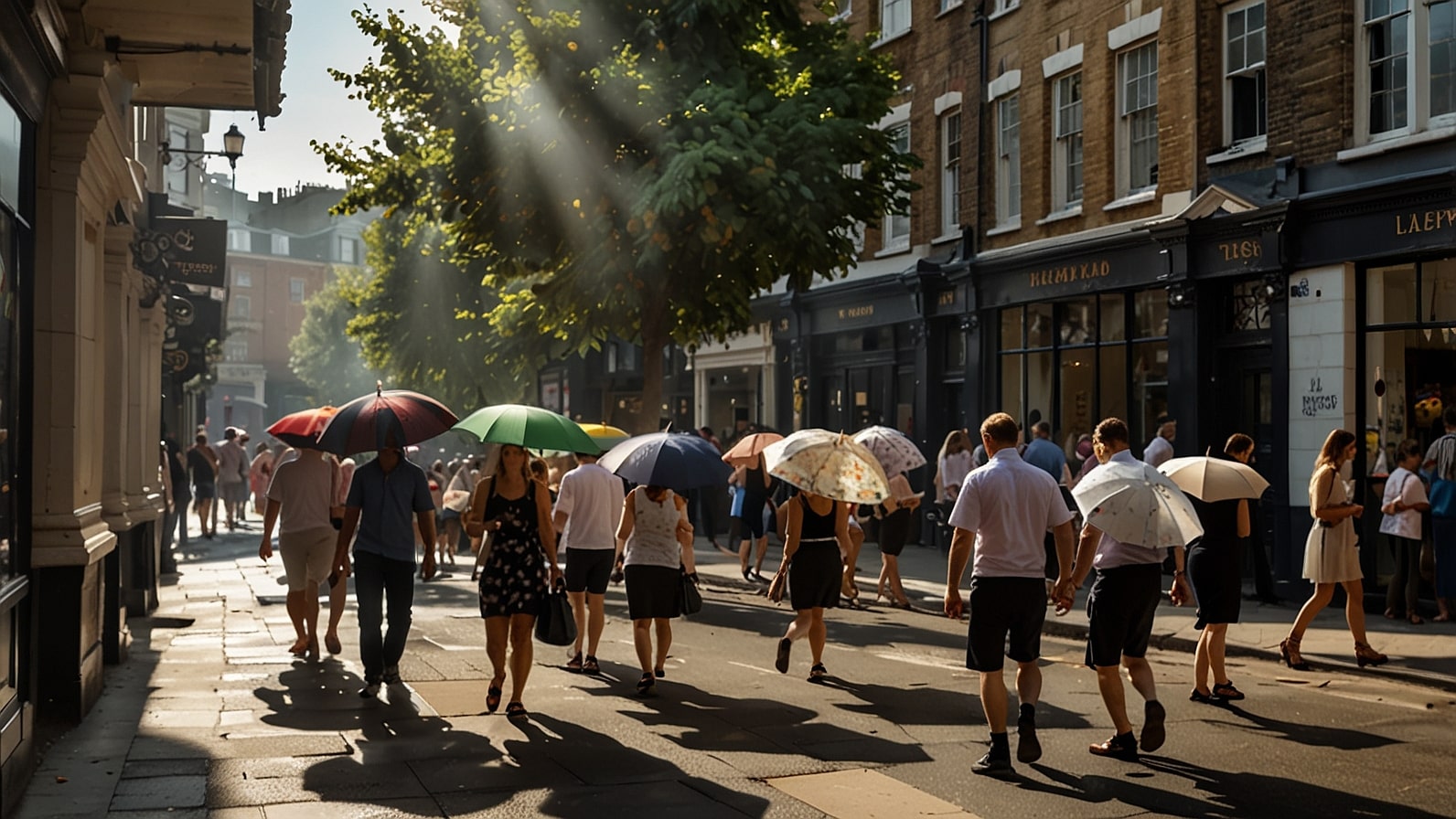It is a case of watch this space as the United Kingdom is preparing itself in the sweltering heatwave this week, when forecasters are saying that temperatures could soar to a sweltering 35C in some parts of the country and could break the British weather records in Wales.
This scorching heat, known as the French frazzle or heatwave, is the fourth heatwave across the summer and will be some of the hottest days of the year, caused by an air mass of hot air blown over the south of France. There is much preparation underway in the nation to deal with this extreme weather, and in the process, inhabitants are being advised to take all possible precautions to stay cool and safe.
Thursday is the Peak of The Heatwave
The Met Office predicts that the heatwave will improve midweek, with August 21, 2025, predicted as the hottest day. Temperatures will peak in the south and the center of England at 34C, with a one in 10 possibility of reaching 35C in the south-east, as warm as Bali.
In Wales, the warmest temperatures are possible, even breaking its previous August record. This is a rush of hot air that comes as a plume from France and has clear skies and strong sunshine. Sarah Keith-Lucas of the Met Office said that the heat will be an asset to holidaymakers, but it presents problems to vulnerable groups.
Health and Safety Warnings Given
As the mercury rises, health officials issue warnings to keep the elderly, young children, and those with medical conditions safe. The UK Health Security Agency will publish heat-health warnings, focusing on hydration and avoiding being in the midday sun.
Scientists advise homes to be painted light colors to reflect sunlight and shutters to be kept closed in a bid to fight overheating, which is becoming a matter of concern in Britain as the nation struggles to deal with warmer summers. Helena Horton in The Guardian and others identified new technologies, such as heat pumps, to cool the homes, which point to the need to adapt over the long term to a warmer world.
Local Effects and Climatic Change Weather Patterns
This heatwave will not cover the whole of the UK uniformly. In the north and west (Scotland, Northern Ireland) there is likely to be a slightly cooler climate, slightly cooler in the mid-20s. The southeast, which comprises London, will, however, be on the receiving end of heat, and nighttime will be humid, making it hard to sleep.
According to weather maps, the current hot spell is just a precursor to the weather about to change violently once again, with an entire 600-mile-long wall of rain set to batter by the end of August, leaving only eight counties untouched. Such a swift transformation highlights the changing weather patterns in the UK, with Birmingham Live reporting that a low as 4C is likely to be experienced shortly after the heat.
An Environmental and Societal Implication
Britain is also raising concerns about climate conditions brought on by the burning heat. According to The Guardian, the UK’s interest in sustainable cooling is increasing, prompting a push to boost insulation and energy efficiency to prevent overheated homes. In the meantime, there has been a debate on whether Britain is prepared for a warmer future, following the recent heatwave.
According to The Economist, the UK should adopt a strategy akin to that of a hot country, investing in infrastructure to withstand high temperatures. This is because the country’s AI ambitions are impeded by the high cost of electricity, threatening to strain resources in such incidents.
Looking Ahead
At the height of the heatwave, communities are urged to reach out to vulnerable neighbors and abide by cooling recommendations (including hydrating and avoiding heavy outdoor work). The weather reported by the Met Office is expected to improve towards a more normal summer pattern by the weekend, though temperatures are going to cool down and rain may fall.
Nevertheless, the level of this heatwave is a painful reminder of the changes in UK weather patterns, putting everyone, and policymakers in particular, under pressure to get ready to face such weather patterns in the future.



